Written by Dayton Ward
Published by Simon and Schuster/Gallery Books
“Our search for the truth must be unrelenting. We have to use every legal means at our disposal, shine all available light into every corner, so that no one can hide. It all has to come out.” – Phillipa Louvois
For the last year, the only licensed Star Trek fiction novels have been tie-ins to the CBS All-Access show Star Trek: Discovery. But now the novels have returned to the 24th Century with Dayton Ward’s Available Light. The book picks up plot threads from David Mack’s 2017 novel Star Trek: Section 31: Control and Ward’s own 2017 novel Star Trek: The Next Generation: Hearts and Minds. It is by no means necessary to have read those novels to appreciate this one, as it is a classic, fun Star Trek: The Next Generation-style yarn that stands very well on its own, but may also be setting the stage for the brand-new Jean-Luc Picard television show that is currently filming.
This novel takes the reader through a solid first contact story showcasing Captain Picard’s skills as both a diplomat and a warrior, but also confronts our Captain with an ethical dilemma based on his actions in previous novels. While Starfleet itself would rather Picard stay out at the far end of the galaxy until the Section 31 debacle works itself out, can he live with himself if he does not return home to face the music?
The result is a novel that doesn’t really break new ground but is content to provide the reader with a solid episode in the life of the crew of the Enterprise-E, and move the greater story on in substantial ways. It was an enjoyable read, and I recommend it.
NOTE: From here on out, there are SPOILERS.
“She gestured to the conduits above their heads. ‘As far as I can tell, half these ducts go nowhere and do nothing.’” – T’Ryssa Chen
Dayton Ward knows Star Trek inside and out, as his “GNDN” reference above shows. And this story is a classic Trek tale, in which our people are out exploring the vastness of space and encounter an enormous, seemingly deserted space ark. As they investigate the ship, they are surprised to find that they are not the only ones interested in the empty vessel. Captain Picard must manage the scientific portion of this mission while also working the diplomatic end with the space salvagers, who have staked a claim on the abandoned behemoth.
This is all interesting, mostly as a variation on things we’ve seen before, and it gives Ward a chance to explore both classic TNG characters like Picard, Worf, Geordi, and Beverly along with characters new to the novels, especially T’Ryssa Chen, as well as the Vulcan Taurik (who appeared in the TNG episode “Lower Decks,” but has become a major character in the TNG novels).
Back on Earth, the fallout from Dr. Bashir’s destruction of Control—the AI behind Section 31—continues. Many of the prominent admirals in the Trek franchise make at least a name-checked appearance here, and Admirals William Ross (DS9) and Alynna Nechayev (TNG) have significant roles, as does Attorney General Phillipa Louvois from the TNG episode, “Measure of a Man.” As Louvois investigates the extent of Control’s human network alongside Admiral Leonard James Akaar (born in the TOS episode “Friday’s Child”), Admiral William Riker, and eventually Captain Jean-Luc Picard comes under close scrutiny. Neither Akaar nor Louvois wants to tarnish Picard’s reputation, but his somewhat unwitting involvement in one of Control’s more heinous crimes makes him a person of interest.
But with Picard far out in space, both Admirals hope he’ll stay there for a while, so that he can return later, when things have cooled down. But the man who made an impassioned defense of truth in the pivotal TNG episode “The First Duty” could not live with himself if he didn’t come clean and tell what he knows, and let the chips fall where they may.
This is completely in character for Picard, and while the new Star Trek: Picard TV series is under no obligation to treat this whole storyline as canon, it could provide interesting character fodder for the background of the show.
When Picard airs, will Picard and Beverly have been married, with a son, like in the licensed novels? Will Picard have been an unwitting pawn of a 24th century Control? We should know by the end of the year.
Final analysis
This is a good, solid space adventure story, with many delights and is well worth reading for fans of Star Trek: The Next Generation and its characters. It fits into that world seamlessly, and Ward is a good writer.
If it offers very little that is daring and new, which is to be expected of licensed fiction, what it does offer is strong adventure, the classic Trek spirit, good characterizations, and quite a few lingering questions about how this version of Control could fit in with what we saw in Discovery Season 2. Perhaps upcoming novels will tell us? We can only hope.
Note: A review copy was provided by the publisher.
Available Light out now
Available Light is available now on Amazon, in paperback, audiobook, and Kindle formats.



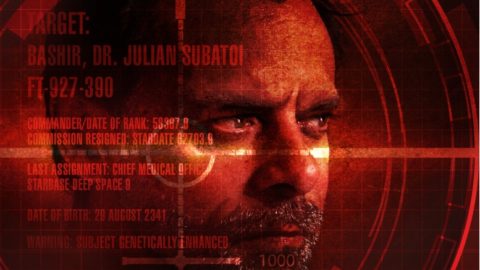
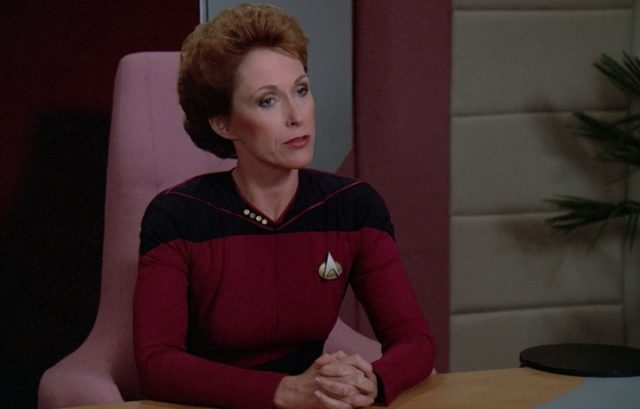
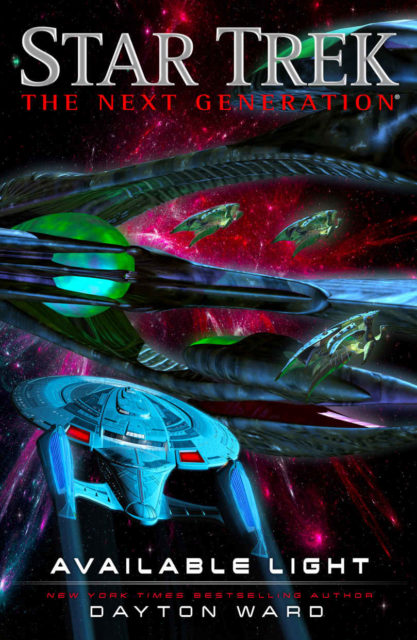

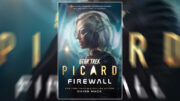

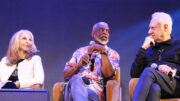
Thanks once again Dénes for bringing Trek-lit to TrekMovie.
I suspect that most of the regulars know that I’m a true fan of the post-Nemesis Relaunch novels. Simon & Schuster deserves kudos for effectively setting up a Trek-lit writers room, establishing long-term story arcs across the franchise and enabling the creation of some great new characters and development of some that we saw only briefly on-screen.
I do hope that the new Picard series retains the key elements of the TNG story arcs. I do think that they’re reconcilable with the Prime events of in Star Trek 2009.
For Available Light, I’d give it a somewhat stronger review. It’s in my view one of Dayton Ward’s better TNG novels.
While the mystery in the ship the Enterprise-E encounters falls under a classic theme, Ward has come up with a truly innovative scientific twist. I won’t spoil it, but I believes it takes a classic Trek exploration story up a notch.
In terms of the characters, it was great to see the irrepressible Tryssa Chen, get to take the lead on the exploration A plot, and to for Taurik to get the chance to show his qualities after his angsty role in the previous book in the series.
Whenever Tryssa appears, I wonder why the TV series never took on the idea of a half-Vulcan who revels in overthrowing expectations of Vulcan emotional restraint.
I found the late-career role of Phillipa Louvois overseeing the S31-related prosecutions very credible, and it was a case where using a character established on TV really made the ‘events back at HQ’ more compelling.
Maybe it’s just me, but whenever I read Chen’s character, the mental image/voice in my head is always Amy from Futurama. Seems to fit?
Wow, not the way I’m seeing T’Ryssa at all.
Amy is ditzy and from a privileged, wealthy background.
Chen’s behaviour, especially in earlier novels, is a choice rooted in a broken family. If anything she’s a half-Vulcan analogue to B’Lanna Torres.
Chen is super-smart, with academic strengths far beyond her expertise as a first-contact specialist.
But she was raised by a single mum, after being abandoned early by her Vulcan father. Not privileged, and in earlier books, is determined to reject Vulcan culture in turn.
If that means throwing in idioms and aphorisms and putting her emotions out there she will.
Seeing find her own path and evolve into a solid bridge officer under the mentorship of Picard and Worf (1st officer), has been a real strength of the long story arc approach in the post-Nemesis Relaunch novels.
It’s not necessarily the background, but it does seem like more recent novels have kind of left that behind unresolved a bit. I certainly do see the Torres comparison, but Chen seems to have a more ‘flippant’ attitude at times. Might depend on the writer. Does seem odd that she seems to get more ‘first-person’ treatment than the majority of the characters, almost any Enterprise crew member except Picard in many books. Seems a bit “creator’s pet” to me at times, but to each their own I guess
I’d agree that she gets lot of attention for a non-series character, but at this point only Worf, Crusher and LaForge are left. Each of them has had a staring role in other novels, so I’m not sure if she gets more time than other bridge crew on average.
However her designation as 1st contact officer, with rotating backup for the other bridge officers makes her a natural for most away missions, especially as Ward avoids having away teams composed exclusively of senior officers.
I find her to be the most 3-dimensional of the new characters. Definitely, flippancy and leaning hard on intuition were strong – ‘see I’m not Vulcan’ – characteristics in her earlier appearances, but she’s definitely evolved. I’d agree that she’s definitely come across as annoying in a couple of the novels.
So where does one start if interested in the post-Nemesis TNG novels? You’ve got me intrigued!
FASAfan,
Well, I think the first one was “Death in Winter” by Michael Jan Friedman, which was published a few years after Nemesis was released.
From there, they branch out to follow the various different Star Trek series; TNG, DS9, VOY, as well as Riker’s time in command of the USS Titan. These are all ongoing series to this day.
There are also several ‘event’ trilogies, such as “Destiny”, which features the final battle with the Borg, and “Cold Equations” which features the return of Data. Plus a couple of S31 novels featuring Julian Bashir.
There are quite a lot to get through, some stronger than others. I haven’t read them all, but I’ll post what I believe are the earliest ones below if you’re interested in starting them…
List for FASAfan…
The following are the earliest in the TNG and Titan series, which all lead-in to the “Destiny” trilogy.
Death in Winter
TITAN:
“Taking Wing”
Michael A. Martin & Andy Mangels
“The Red King”
Andy Mangels & Michael A. Martin
“Orion’s Hounds”
Christopher L. Bennett
“Sword of Damocles”
Geoffrey Thorne
TNG:
“The Buried Age”
Christopher L. Bennett
“Resistance”
J. M. Dillard
“Q&A”
Keith DeCandido
“Before Dishonor”
Peter David
“Greater than the Sum”
Christopher L. Bennett
Have to say I agree with TG47’s comments about the post-Nemesis books. I have really enjoyed them too and think of them as a really solid continuation of the respective series.
No matter how good the ST:P series proves to be (and I’m hoping for the best) I can’t help but feel I’ll be just a little disappointed if it ends up contradicting the events of the books.
Strangely enough I’ve never actually read a TOS novel. I own the ‘Legacies’ trilogy but haven’t gotten around to reading it yet. Have just purchased ‘The Captain’s Oath’ though…
“quite a few lingering questions about how this version of Control could fit in with what we saw in Discovery Season 2.”
Considering that the novel-version of Control pre-dates its introduction into Discovery by a couple of years, it’ll be interesting to see how the novelists reconcile this.
Very obviously the writers have no idea of military protocols. Riker has been promoted to Admiral while Piccard has been bypassed and he is still a Captain? This is silly just like the JJ Abrams’ ST where Kirk is just a 3rd year Academy student(about 7 ranks below Spock) and Spock a LtCdr (0-4). Kirk hasn’t been even commissioned yet and he ends up at Capt (0-6). C’mon that has never happened in history and will never happen. Only twice in military history cadets were allowed to fight, but they remain cadets and not commissioned officers. Then Uhura is a third year cadet then becomes a lieutenant magically (0-2 or 0-3). and Kirk zooms above everyone? Sorry, being retired military has disadvantages, I guess. Then Uhura’s relationship with Spock. Do you realize the court martial if a LtCdr even touches a 3rd year cadet????? The 0-4 would spend a lot of time in prison. Sorry to ruin everyone’s ideas in this forum.
No need to apologize, that movie had one job: get the crew where we recognize them in TOS. It was made to be entertaining, not accurate.
Considering that Starfleet is neither a military organization or a real organization, your comparison to contemporary military precedent is moot.
Well if you’re adopting that logic, then we could apply it ad nauseam and declare the whole Star Trek universe moot…
Hey JayMar, I’m suggest that you read the books before judging whether Riker should have been promoted ahead of Picard.
There are 10 years and many books between Nemesis and Available Light.
Riker, with Captain Ezri Dax and Picard had been the 3 captains (in the Destiny 2381 trilogy) to see through the end of the Borg.
Picard will always be a hero, but his earlier subornment as Locutus stood, among other things, in the way of promotion to the Admiralty. Bypassed with a reason … even if he had been interested in giving up his ship.
Riker was intentionally promoted as a young, trustworthy, principled outsider to a posting as a sector admiral on the frontier.
Dax, a young captain, with an old symbiont, showed she more than warranted her brevet wartime command of a prototype vessel.
So, I don’t find the books out of line with military reality, and I’m pretty aware of it.
More to the point, Ward’s books reflect that he served more than a decade as a US marine.
(Let’s leave aside the Abrams movies which come from a different set of writers…)
On the topic of Kirk and how he earns command of the Enterprise; the new novel “The Captain’s Oath” by Christopher L. Bennett tells this very tale (about prime universe Kirk).
Set four years prior to the start of TOS, it tells the tale of how Kirk (already Starfleet’s youngest Captain) earns command of the Enterprise.
Have only just purchased it so can’t provide any feedback as of yet, but expect they will review it here on TrekMovie soon…
Riker going from Captain to Admiral (one rank) is just like Kirk going from cadet to captain?
Obvious troll is obvious.
That cover is an ugly mess of colours. Hard to look at, much less think someone intentionally created it and others approved it. Horrid.
Trek covers have been bland to awful for decades, but this one is beyond description. Awful, ugly, incoherent, no clear concept, terrible color pallette, uneven nacelles…ugh.
I liked the cover of the first Vanguard (TOS era) novel.
It showed the station that was the focalpoint for the series.
I don’t find the recent covers as garish on paper as electronically.
And at least Simon & Schuster is using original art that actually reflects what’s in the books.
So many current science fiction novels, including Hugo and Nebula award nominees, have covers that are composed of stock images that vaguely represent the content.
Still wish they would make more Star Trek movies around this kind of concept rather than almost always about stopping some individual bent on destroying something important.
Disclaimer: I haven’t read this book, so I’m just assuming based on the review that it’s not about some individual bent on destroying something.
You and me both fam.
You’d be right -Jeff.
And it’s why I’ve been very pleased with the last several TNG books which have made a real effort to turn back to exploration.
This book strikes a good balance between a classic Trek story and the big stage political backdrop of the fallout from public exposure of 200 years of S31 misdeeds, with moral dilemmas in both cases.
The S31 fallout story doesn’t progress much in the B plot. The critical plot point is the crew’s reaction to the public revelation that Picard was (unintentionally) party to an S31 misdeed, and Picard’s decision to present himself early to the ongoing judicial processes.
One could argue ST:TMP was a more conceptually grand film…but it failed to deliver at the box office. Whereas the ‘individual bent on destruction’ theme is a formula that has paid off again and again (in all genres). Not saying I like it though.
Arathorn,
TMP did NOT fail to deliver at the box office. If it had, Paramount never would have made the next one.
Oh thank gosh…! I was hoping they were still doing Trek EU novels. If I don’t get an eventual follow-up to “Enigma Tales”, I’m gonna be a really unhappy Trekkie.
Una McCormack just had her first stand alone novella published (The Undefeated) so she’s definitely had her plate full of other things.
I’m also hoping though that the new Simon and Schuster management will authorize more DS9 and Cardassian books.
However, they’ve been very careful not to go further forward than 2386…and even in those the Enterprise-E is off exploring and the S31 fallout is creeping along.
I have a suspicion that the publisher has to hold back a bit until the Picard show determines if these books are going to be offside canon.
Moving forward from Enigma Tales and The Missing might lock down more than they’re ready to take on at this point.
I’m very curious to see what David Mark’s next TNG novel, to be released in October, will do with Picard…and whether it has any alignment with the backstory for the new Picard series.